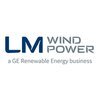
i
CleanMax Enviro Energy
Solutions
Filter interviews by
CleanMax Enviro Energy Solutions Interview Questions and Answers
10 Interview questions
Solar panels convert sunlight into electricity through the photovoltaic effect.
Solar panels are made up of photovoltaic cells that contain semiconductors like silicon.
When sunlight hits the solar panel, the photons in the light are absorbed by the semiconductors.
This absorption creates an electric current as the electrons in the semiconductors are excited and flow through the material.
The flow of electrons generat...
Various losses in a transformer include copper losses, iron losses, and stray losses.
Copper losses occur due to resistance in the transformer windings.
Iron losses, also known as core losses, occur due to hysteresis and eddy currents in the transformer core.
Stray losses occur due to leakage flux and stray capacitance in the transformer.
Copper losses and iron losses are the major contributors to total losses in a tr...
AC and DC are two types of electrical current. AC changes direction periodically while DC flows in one direction.
AC stands for Alternating Current and DC stands for Direct Current.
AC changes direction periodically, typically in a sinusoidal waveform.
DC flows in one direction only, maintaining a constant polarity.
AC is used for power transmission over long distances due to its ability to be easily converted to diff...
An inverter is a device that converts DC power to AC power.
An inverter is commonly used in electrical systems to convert the direct current (DC) produced by sources such as batteries or solar panels into alternating current (AC) that can be used to power appliances and devices.
The basic working principle of an inverter involves the use of electronic components such as transistors to switch the DC input on and off ...
Solar panel installation requires several components including solar panels, inverters, mounting systems, wiring, and electrical protection devices.
Solar panels: These are the main components that convert sunlight into electricity.
Inverters: They convert the direct current (DC) produced by solar panels into alternating current (AC) that can be used in homes or fed into the grid.
Mounting systems: These are used to ...
If HRA not provided for family, negotiate for additional compensation.
Negotiate for additional compensation to cover the cost of housing for family
Research the cost of housing in the area and present this information during negotiations
Consider alternative options such as company-provided housing or a housing allowance
Ensure that any agreement reached is clearly outlined in the employment contract
Factors considered when a client approaches for setting up solar panels
Location and orientation of the site
Amount of available sunlight
Electricity usage and needs of the client
Budget and financing options
Permits and regulations
Maintenance and warranty
Potential for future expansion
Environmental impact
Availability of incentives and rebates
Net metering is a billing arrangement that allows solar panel owners to receive credit for excess electricity they generate and send back to the grid.
Net metering is a policy that allows solar panel owners to receive credit for excess electricity they generate.
The excess electricity is sent back to the grid, and the owner receives a credit on their electricity bill.
Net metering helps promote the use of renewable e...
The basic law governing transformers is the law of electromagnetic induction.
The law states that when the magnetic field around a conductor changes, an electromotive force (EMF) is induced in the conductor.
This EMF can cause a current to flow if the conductor forms a closed loop.
In a transformer, this principle is used to transfer electrical energy from one circuit to another through electromagnetic induction.
The ...
There are various types of circuit breakers with different uses and ratings.
Miniature Circuit Breaker (MCB) - used in residential and commercial buildings
Molded Case Circuit Breaker (MCCB) - used in industrial applications
Air Circuit Breaker (ACB) - used for high voltage applications
Ground Fault Circuit Interrupter (GFCI) - used to protect against electrical shocks
Residual Current Circuit Breaker (RCCB) - used to ...
CleanMax Enviro Energy Solutions Interview Experiences
18 interviews found
I applied via Campus Placement and was interviewed in Dec 2024. There were 2 interview rounds.
Easy test with simple questions
(2 Questions)
- Q1. How do solar panels produce electricity
- Ans.
Solar panels convert sunlight into electricity through the photovoltaic effect.
Solar panels are made up of photovoltaic cells that contain semiconductors like silicon.
When sunlight hits the solar panel, the photons in the light are absorbed by the semiconductors.
This absorption creates an electric current as the electrons in the semiconductors are excited and flow through the material.
The flow of electrons generates el...
- Q2. Tell us about the company
- Ans.
The company is a leading provider of electrical engineering solutions for various industries.
Specializes in designing and implementing electrical systems for commercial and industrial buildings
Offers services such as power distribution, lighting design, and energy efficiency consulting
Works with clients in sectors like manufacturing, healthcare, and telecommunications
Has a team of experienced electrical engineers and t...
I appeared for an interview in Mar 2025, where I was asked the following questions.
- Q1. AC & DC
- Q2. Transformer Commissioning & Testing all Electrical work
- Q3. LT HT And power Cable All Canection
- Q4. Pilling MMS & IDT, Fencing , Road Greding Bursh Clening All Civil And Electrical Work
- Q5. Inverter SCB and String Monitoring
Interview Preparation Tips
I applied via Campus Placement
(3 Questions)
- Q1. What is net metering
- Ans.
Net metering is a billing arrangement that allows solar panel owners to receive credit for excess electricity they generate and send back to the grid.
Net metering is a policy that allows solar panel owners to receive credit for excess electricity they generate.
The excess electricity is sent back to the grid, and the owner receives a credit on their electricity bill.
Net metering helps promote the use of renewable energy...
- Q2. Where do you see yourself in 5 years
- Ans.
In five years, I envision myself as a strategic leader in business development, driving growth and innovation in my organization.
I aim to lead a high-performing BD team, fostering collaboration and achieving ambitious targets.
I plan to expand my network, building strong relationships with key industry stakeholders and partners.
I aspire to develop and implement innovative strategies that enhance market penetration and c...
- Q3. What languages do you speak
- Ans.
I am fluent in English and Spanish.
Fluent in English and Spanish
Can communicate effectively in both languages
I applied via Campus Placement
(7 Questions)
- Q1. Basic law of governing transformer
- Ans.
The basic law governing transformers is the law of electromagnetic induction.
The law states that when the magnetic field around a conductor changes, an electromotive force (EMF) is induced in the conductor.
This EMF can cause a current to flow if the conductor forms a closed loop.
In a transformer, this principle is used to transfer electrical energy from one circuit to another through electromagnetic induction.
The prima...
- Q2. What are various losses in transformer
- Ans.
Various losses in a transformer include copper losses, iron losses, and stray losses.
Copper losses occur due to resistance in the transformer windings.
Iron losses, also known as core losses, occur due to hysteresis and eddy currents in the transformer core.
Stray losses occur due to leakage flux and stray capacitance in the transformer.
Copper losses and iron losses are the major contributors to total losses in a transfo...
- Q3. Difference between AC and DC
- Ans.
AC and DC are two types of electrical current. AC changes direction periodically while DC flows in one direction.
AC stands for Alternating Current and DC stands for Direct Current.
AC changes direction periodically, typically in a sinusoidal waveform.
DC flows in one direction only, maintaining a constant polarity.
AC is used for power transmission over long distances due to its ability to be easily converted to different...
- Q4. What is mean by inverter and its basic working
- Ans.
An inverter is a device that converts DC power to AC power.
An inverter is commonly used in electrical systems to convert the direct current (DC) produced by sources such as batteries or solar panels into alternating current (AC) that can be used to power appliances and devices.
The basic working principle of an inverter involves the use of electronic components such as transistors to switch the DC input on and off rapid...
- Q5. What all component are required in solar panel installation and brief them
- Ans.
Solar panel installation requires several components including solar panels, inverters, mounting systems, wiring, and electrical protection devices.
Solar panels: These are the main components that convert sunlight into electricity.
Inverters: They convert the direct current (DC) produced by solar panels into alternating current (AC) that can be used in homes or fed into the grid.
Mounting systems: These are used to secur...
- Q6. What all various type of circuit breaker are there their uses and their rating.
- Ans.
There are various types of circuit breakers with different uses and ratings.
Miniature Circuit Breaker (MCB) - used in residential and commercial buildings
Molded Case Circuit Breaker (MCCB) - used in industrial applications
Air Circuit Breaker (ACB) - used for high voltage applications
Ground Fault Circuit Interrupter (GFCI) - used to protect against electrical shocks
Residual Current Circuit Breaker (RCCB) - used to detec...
- Q7. Why you choose electrical engineering and what all project you has done and what are your final year project if you mention in resume.
Interview Preparation Tips
Pro Tips :- they see how much confident and clear are you, academic score doens't matter at all.
I appeared for an interview in Feb 2025, where I was asked the following questions.
- Q1. Land Acquisition
- Q2. Land Row & Documents & Registration ATS and GPA & AOL & TSR questions
Interview Preparation Tips
(2 Questions)
- Q1. Concrete technology
- Q2. Soil and steel testing and field observation
I applied via LinkedIn and was interviewed in Jul 2023. There were 4 interview rounds.

Technical,business & Project related case study
(2 Questions)
- Q1. Technical relate to business
- Q2. Wind and solar powerplant related
(1 Question)
- Q1. General & Psychological
I applied via Recruitment Consulltant and was interviewed in Sep 2023. There were 2 interview rounds.
(1 Question)
- Q1. About current employment
(1 Question)
- Q1. About land Acquisition rules regulations and work knowledge
Interview Preparation Tips
- Land Acquisition

(1 Question)
- Q1. About yourself and how many experience in SCM
(1 Question)
- Q1. Subscription materials details
Top trending discussions






CleanMax Enviro Energy Solutions Interview FAQs
Some of the top questions asked at the CleanMax Enviro Energy Solutions interview -
Tell us how to improve this page.
CleanMax Enviro Energy Solutions Interviews By Designations
- CleanMax Enviro Energy Solutions Electrical Engineer Interview Questions
- CleanMax Enviro Energy Solutions Senior Engineer Interview Questions
- CleanMax Enviro Energy Solutions Business Development Manager Interview Questions
- CleanMax Enviro Energy Solutions BD Manager Interview Questions
- CleanMax Enviro Energy Solutions Project Coordinator Interview Questions
- CleanMax Enviro Energy Solutions Manager Interview Questions
- CleanMax Enviro Energy Solutions Assistant Land Acquisition Manager Interview Questions
- CleanMax Enviro Energy Solutions Senior Quality Engineer Interview Questions
- Show more
Interview Questions for Popular Designations
Overall Interview Experience Rating
based on 10 interview experiences
Difficulty level
Duration
Interview Questions from Similar Companies
CleanMax Enviro Energy Solutions Reviews and Ratings
based on 128 reviews
Rating in categories
|
Assistant Manager
50
salaries
| ₹6 L/yr - ₹13.5 L/yr |
|
Senior Engineer
19
salaries
| ₹5.2 L/yr - ₹9.9 L/yr |
|
Senior Manager
16
salaries
| ₹15.3 L/yr - ₹26 L/yr |
|
Business Development Manager
12
salaries
| ₹13 L/yr - ₹18.5 L/yr |
|
Deputy Manager
12
salaries
| ₹12 L/yr - ₹18.5 L/yr |

UTL Solar

Danfoss Power Solutions

LM Wind Power

Senvion
- Home >
- Interviews >
- CleanMax Enviro Energy Solutions Interview Questions










